Cooking enthusiasts and home cooks know the delightful experience of using a ceramic pan. These versatile kitchen workhorses are prized for their even heat distribution, non-stick properties, and the ability to elevate your culinary creations. However, proper cleaning and maintenance are essential to keep your ceramic pan performing at its best and looking like new.
Below, we'll share how to clean ceramic pans so that you can keep your ceramic pans nonstick and clean.
How To Clean Ceramic Pans With Normal Food Residue
Let The Pan Cool
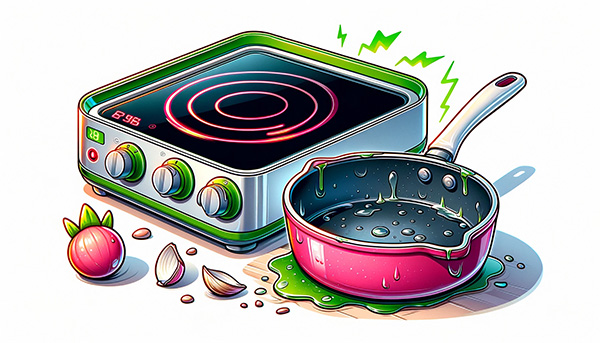
Although it's best to clean your ceramic pans quickly after use, it's also important to let them cool down somewhat before washing. Drastic temperature changes will cause the nonstick ceramic coating to wear down quickly. Letting the pan cool down completely is unnecessary, but only until it's warm to the touch.
Wash With Soapy Water
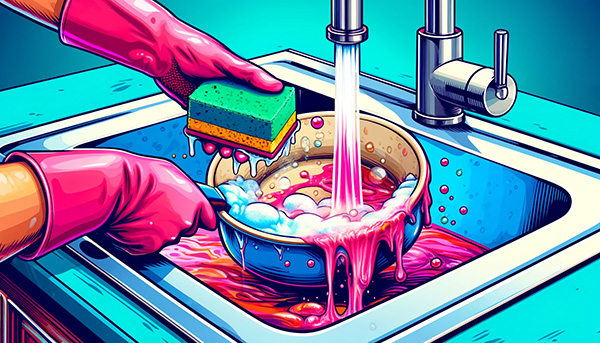
Put a few drops of gentle dish soap into the dirty pan and add a small amount of warm water. Using a non-abrasive sponge, scrub the pan with the warm, soapy water in circular motions. Once the food particles have been scrubbed away, rinse the pan with hot water.
Let The Pan Air-Dry
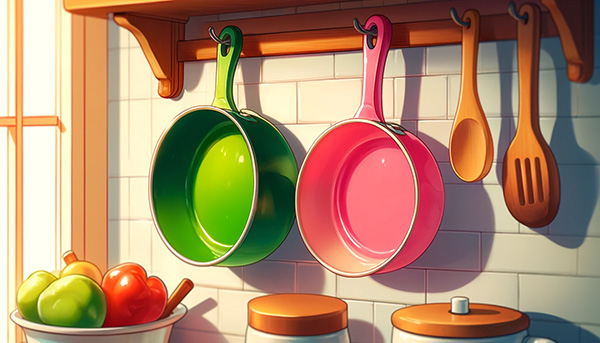
Allow the clean pan to air-dry on a dish rack. Alternatively, you can expedite drying by using a soft cloth or paper towels to dry the pan.
How To Clean Burnt Ceramic Pan
There are various ways to clean stuck, charred food without damaging the ceramic finish. Here are three options for you to try:
Soak Overnight
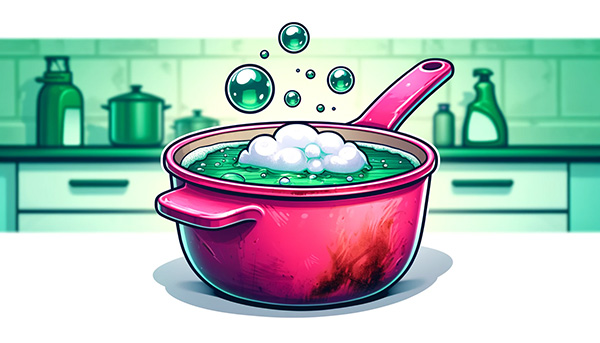
The most straightforward cleaning process to remove charred food from the cooking surface is to fill the pan with hot water and dish soap. Any regular dishwashing liquid will do. Fill the pan with the soapy water and let it sit for at least three hours. For best results, let the soapy water sit in the pan overnight! Then, scrub off the food particles using the regular cleaning method outlined above. Remember that this method can only be used if the ceramic pans are made from stainless steel or some other metal. A ceramic cookware with a cast iron core should never be left to soak.
Scrub Baking Soda
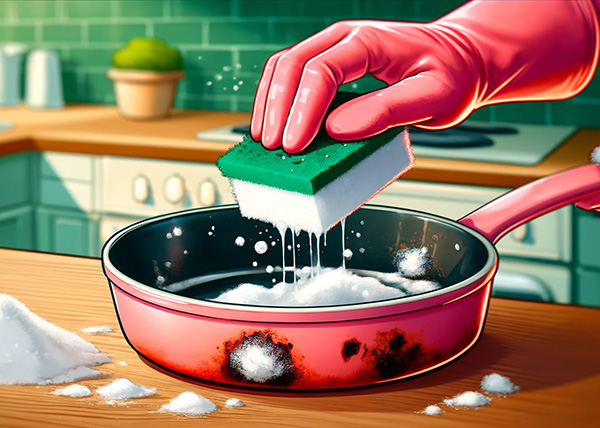
While other abrasive cleaners will cause the non-stick coating to deteriorate, baking soda is only mildly abrasive and won't damage ceramic coatings. Sprinkle approximately two tablespoons of baking soda on the affected burnt area, then use a damp sponge to gently scrub the dry baking soda into the food residue using a circular motion. This will take both time and elbow grease, but resist using steel wool pads or other abrasive scrubbers instead of the soft sponge.
Cook Baking Soda + Water
Applying heat to a baking soda and warm water paste removes burnt food from the bottom of a ceramic pan. Sprinkling baking soda across the bottom of the pan, carefully pour warm water until the pan is halfway filled. Set the ceramic pan over medium heat until the mixture begins to boil, then bring it down to a simmer. Maintain this simmer for 10 to 15 minutes, then follow up with the regular cleaning method.
How To Clean Ceramic Pan With Stubborn Stains
Tough stains can build up on the surface of the cookware over time. Use one of the following cleaning products to clean ceramic cookware stained with rust, wine, acidic foods, grease buildup, or oil oxidation.
White Vinegar
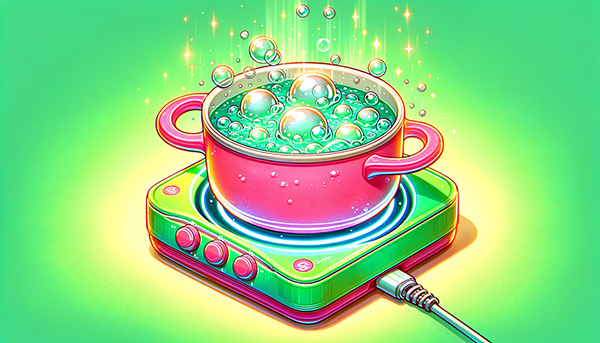
Distill the white vinegar in water following a 1:4 ratio of vinegar to water. Take care that the mixture is never more concentrated than the 1:4 ratio. Vinegar is acidic and can corrode nonstick cookware. Pour this mixture into the ceramic pan and let it sit overnight, ensuring that the stained area is submerged. Let the solution sit overnight, or boil the vinegar on the stovetop for 15 minutes.
Hydrogen Peroxide
Hydrogen peroxide, a potent bleaching agent, effectively eliminates food stains from the cookware. Begin by coating the bottom surface of the ceramic pan with 3% hydrogen peroxide. You should observe bubbling, indicating its effectiveness, unless it has expired. Allow the hydrogen peroxide to sit within the ceramic pan for a minimum of 30 minutes before thoroughly rinsing and drying it with a soft towel.
What Not To Do When Cleaning A Ceramic Pan Or Pot
Using Metal Utensils
Ceramic pans have a delicate, non-stick ceramic coating that can be easily scratched or damaged by metal utensils. To safeguard your pan, choose utensils crafted from silicone, wood, plastic, or bamboo. These materials are gentle on the ceramic surface and extend your cookware's lifespan.
Opt for wooden spoons, nylon spoons, or silicone utensils to preserve the nonstick coating on ceramic cookware. This also means that food should never be cut directly inside the ceramic pan but should be transferred to a plate or cutting board.
Abrasive Scrubbers Or Scouring Pads
Scrubbing your ceramic pan with abrasive scrubbers or scouring pads may seem like a good way to remove stubborn stains, but it's a big no-no. Using these harsh materials can result in scratches on the ceramic coating, diminishing its effectiveness and increasing the likelihood of food particles getting trapped.
Metal pads, steel wool, and harsh dishwasher detergents should be avoided. Instead, use soft sponges or brushes with non-abrasive bristles to clean your ceramic pan.
High Heat
While ceramic pans are generally heat-resistant, exposing them to extremely high heat can lead to problems. Steer clear of subjecting an empty ceramic pan to high heat, as this can lead to the deterioration or cracking of the non-stick coating. Instead, start with low to medium heat settings and gradually increase as needed.
Excessive Oil
While a small amount of oil is often used to enhance the non-stick properties of a ceramic pan, using too much can lead to a sticky residue. This residue can accumulate and become challenging to clean. Apply a thin layer of oil or cooking spray as necessary, and be sure to wipe away any excess after cooking.
Boiling Water
Never boil an empty ceramic pan. Avoid subjecting your hot ceramic pan to sudden temperature changes, such as immersing it in cold water, as this can result in thermal shock, potentially causing cracks or harm to the ceramic surface. Always have food or liquid in the pan when it's on the heat source.
Harsh Chemical Cleaners
The ceramic coating is easily damaged, and this fact should be noted. Avoid using harsh chemical cleaners, oven cleaners, or bleach on your ceramic pan. These chemicals can damage the non-stick coating, affecting its performance and potentially exposing you to harmful substances. Instead, use gentle dish soap and warm water when cleaning your ceramic cookware.
Dishwasher Use
Most manufacturers recommend against cleaning ceramic pans in the dishwasher. Avoid harsh detergents and high water pressure, as they can be abrasive and harmful to the non-stick coating. Handwashing your ceramic cookware with mild soap and warm water is safer.
Excessive Oil
While a small amount of oil is often used to enhance the non-stick properties of a ceramic pan, using too much can lead to a sticky residue. This residue can accumulate and become challenging to clean. Apply a thin layer of oil or cooking spray as necessary, and be sure to remove any excess residue after cooking.
Don't Stack To Store
Care should be taken to preserve the integrity of the nonstick ceramic surface of the ceramic frying pan. Just as metal utensils should be avoided, it is also important to never stack ceramic cookware on top of each other or top of other cookware. When stacking ceramic pans, the bottom of one pan can easily scratch and damage the inside of the pan beneath it.
Tips For Maintaining Ceramic Pans And Pots
Hand Wash Only
While some ceramic cookware claims to be dishwasher-safe, it's generally best to hand wash it. Use mild dish soap, warm water, and a soft sponge or cloth for cleaning. Steer clear of abrasive scrubbers or scouring pads, which can potentially scratch the ceramic surface.
Avoid High Heat
Ceramic cookware can withstand moderately high temperatures, but it is best to avoid extreme heat. Use low to medium heat settings for cooking, as excessive heat can damage the ceramic coating over time.
Use Silicone Or Wooden Utensils
Opt for silicone, wood, plastic, or bamboo utensils to prevent scratching the ceramic surface. Metal utensils should be avoided, as they can cause damage.
Moderate Oil Usage
Even though ceramic cookware is non-stick, it is advisable to apply a modest amount of oil or cooking spray when necessary. This practice enhances its non-stick attributes and prevents food from adhering to the surface.
Preheat Gently
Preheat your ceramic cookware gently before adding food to prevent sticking. Preheating an empty ceramic pan over high heat is not advisable, as this can damage the coating.
Store Carefully
Properly store your ceramic cookware to prevent any scratching or damage to its non-stick surface. Use soft cloth or paper towel liners between stacked pots and pans, and avoid overcrowding or stacking them excessively.
Inspect For Damage
Frequently examine your ceramic cookware for any indications of damage or wear. Detecting chipping, cracks, or a declining non-stick surface could indicate that it's time to consider replacing the cookware.
